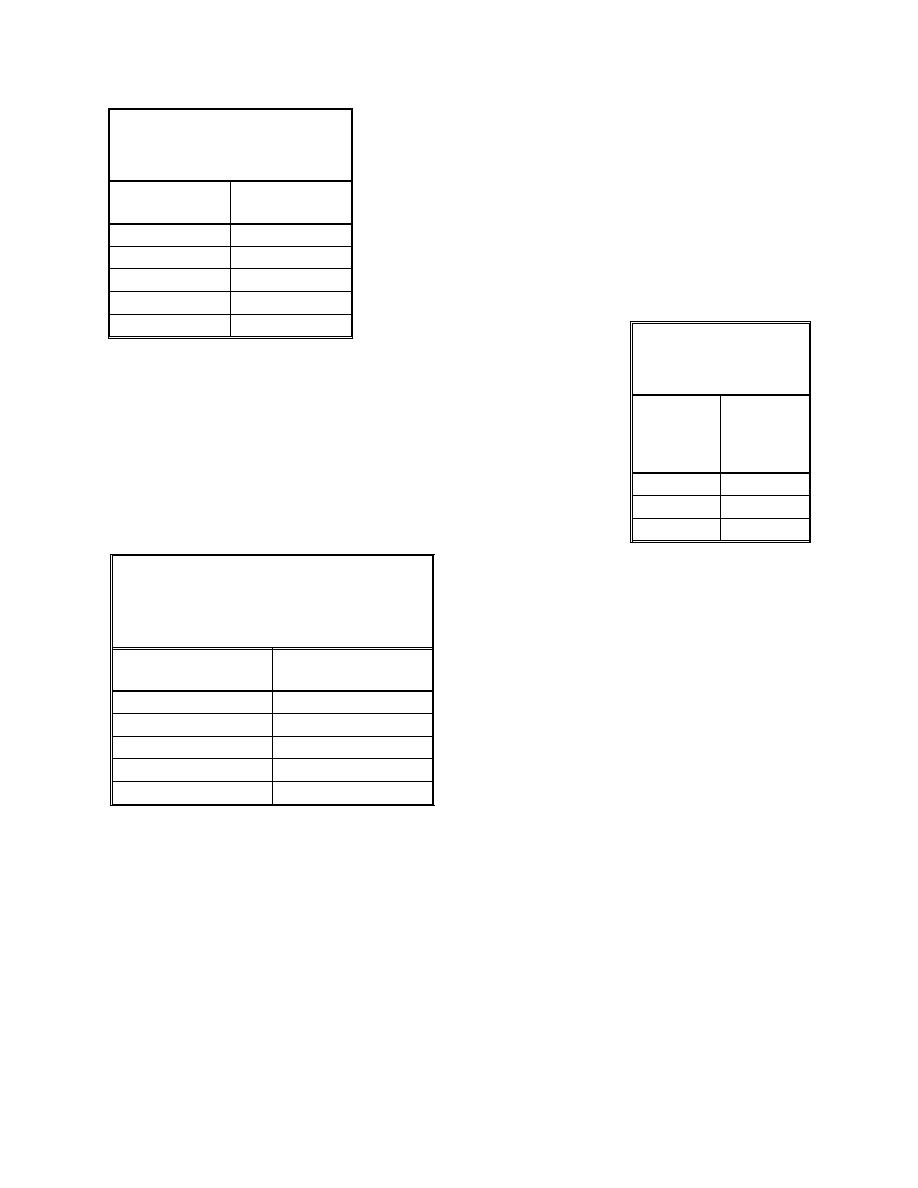 |
||
|
|
||
|
Page Title:
TAble 1. Size Fraction Distribution of Dredged Material |
||
| |||||||||||||||
|
|
 ERDC TN-DOER-E12
July 2000
The sediment fraction distribution of the dredged material is
Table 1
shown in Table 1, and is based on measurements made in the
Size Fraction Distribution
Providence River (USAED, New England, 1998). This distri-
of Dredged Material
bution contains equal fractions by weight of clay, fine silt and
Percent
medium silt, with an additional one-half fraction of fine sand.
Material
Clay
5.6
The specification of the sediment source strength for input
Fine Silt
5.8
to the model is based on an estimated production rate of
Medium Silt
5.8
7,700 yd3/day (0.068 m3/sec). Assuming a solid fraction of
Fine Sand
2.8
0.2 (20 percent solids) by weight and a sediment density of
2,600 kg/m3, the mean rate of sedi-
Fluid
80.0
Table 2
ment dredged is 35.4 kg/sec. The
Model Source
source strength is then defined as the percent of this amount that is
Strengths of TSS
released to the environment during the dredging operation. The as-
TSS
sumed release rates correspond to different bucket types and operational
Release
Loading
protocols. These rates are1.5 percent for an environmental bucket that
Rate,
Rate,
seals the bucket load, 2 percent for a conventional bucket, and 4 percent
percent
kg/sec
for a conventional bucket with allowance for barge overflow during 1.5
0.53
loading operations (USAED, New England, 1998). The actual model
2.0
0.71
loading rate or source strength for TSS is shown in Table 2.
4.0
1.42
Table 3 shows the percent of material released as a
Table 3
percent of local depth. The load is distributed over
Vertical Distribution of Material
the water column with decreasing release amounts
Released into the Water Column
from bottom to surface to better simulate release
during Dredging Operations
distributions (USAED, New England, 1998).
Percent of Local
Percent of Material
Depth
Released
The assumed locations of the dredging-generated
80 100 (surface)
5
sediment plumes in various channel reaches are
60 80
10
shown in Figure 3. The northernmost reach, Fox
40 60
15
Point, has two sites in its northern (FPRN) and
20 40
30
central (FPRC) areas. The next reach to the south,
0 20 (bottom)
40
Fuller Rock, has one site situated at its midpoint
(FRRC). The Bullock Point Reach has a site lo-
cated at its southern end (BPRS) and the Rumstick Neck Reach has a site at its midpoint (RNRC).
The FPRC, BPRS and RNRC sites were each evaluated individually for the three release rates. Three
additional scenarios that combined FPRN and FPRC; FPRC and FRRC; and FPRN, FPRC and
FRRC were also simulated with a 2 percent release rate.
MODEL RESULTS: The modeling results are presented below in two forms: (a) color contours
of concentrations in plan and vertical section views that show the maximum horizontal and vertical
extent of the resulting sediment plumes; and (b) time-series plots of concentrations at the release
site and at specified distances of 150 m (500 ft) and 300 m (1,000 ft) up and down the channel from
the release point. These locations correspond to the monitoring requirements for the Boston Harbor
Navigation Improvement Project (USAED, New England, 1998). The concentrations presented are
excess concentrations since no ambient levels are included. The range of historically observed
6
|
|
Privacy Statement - Press Release - Copyright Information. - Contact Us - Support Integrated Publishing |